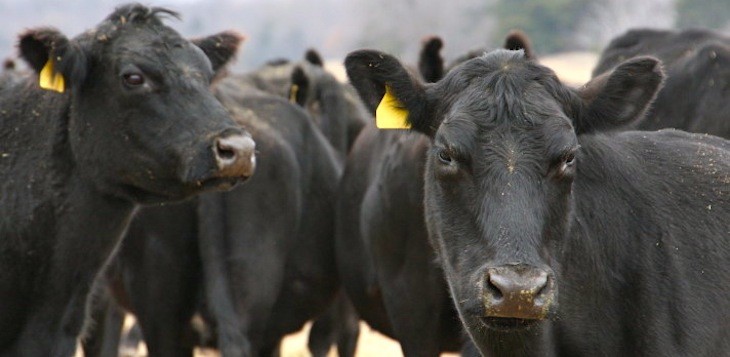2020 looks to be solid year for cattle markets
by January 6, 2020 1:25 pm 696 views

As 2020 gets underway the cattle industry is looking at new opportunities, ongoing changes and evaluating a few risks to its business.
Derrell Peel, livestock marketing specialist at Oklahoma State University, said the watch list of beef and cattle market factors includes domestic demand, supply dynamics, competing meats and feed and input markets.
“However, changes in several factors towards the end of 2019 suggest a somewhat different tone for markets in 2020,” he added.
Peel said the international market signals are clearer after trade disruptions and uncertainty clouded many agri-markets over the past two years. He said the likely completion of the revised NAFTA agreement (USMCA) in the coming weeks removes a significant source of uncertainty for agricultural markets.
The new bilateral trade agreement with Japan will also restore a more competitive position for beef and should stop the erosion of the U.S. market share, which became very apparent in that important beef export market in the second half of 2019.
“Though details are currently lacking, the anticipated Phase 1 trade agreement with China is expected to significantly improve the trade situation for numerous agricultural markets and may allow beef to begin building a meaningful market position in the rapidly growing beef market in China,” Peel said.
He said the fallout from African Swine Fever will likely be a major factor affecting protein markets globally in 2020. As the disease has created pork shortages in China and other countries in Asia, Europe and Africa.
“The exact magnitude of impacts is uncertain and there is no indication that the disease will be effectively controlled any time soon. The reduction in global meat production will support all protein markets and is expected to boost U.S. exports of pork, poultry and beef in 2020,” Peel said.
Looking at supply, Peel expects cattle numbers to be down slightly from last year. He said the status of the cattle cycle will be confirmed in the cattle inventory report to be released at the end of January. He expects beef production to peak fractionally higher in 2020, with heavier carcass weights offsetting a slight decline in cattle slaughter. Peel said carcass weights finished 2019 above year-earlier levels and will bear watching in the coming year.
“Total U.S. meat production will once again push to new record levels in 2020 with beef, pork and poultry all at or near record levels,” Peel predicts. “Trade improvements will be critical to providing a strong international component of meat demand in addition to domestic demand. Overall, improvements in net meat trade (more exports and fewer imports) are expected to offset a significant portion of increased meat production and limit the growth in domestic meat consumption.”
While the outlook is rosy, Peel outlined a few risks to the cattle industry worth watching. He said global trade tensions, though reduced, will continue to add uncertainty to markets. He said geopolitical tensions, the U.S. presidential election, energy prices and currency value will each contribute to market volatility and could negatively raise input costs and curb consumer spending.
“In summary, 2020 offers better opportunities for cattle and beef markets but producers are advised to keep an eye on a host of macro-economic and global factors, as well as evolving cattle market conditions, and proceed with caution,” Peel said.
